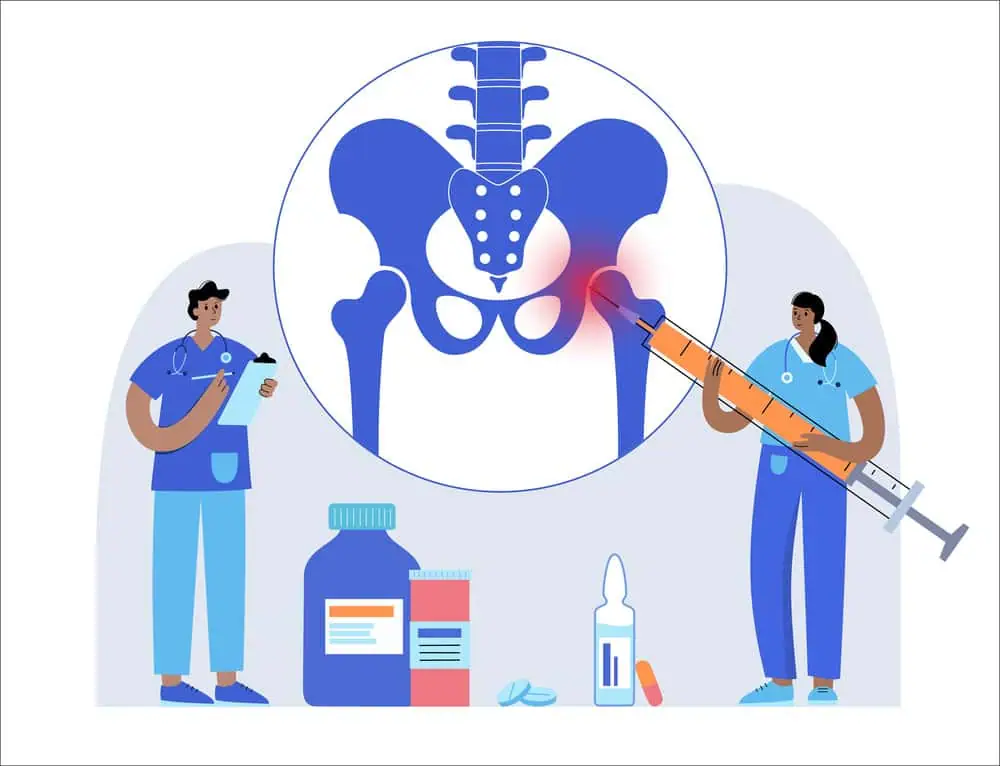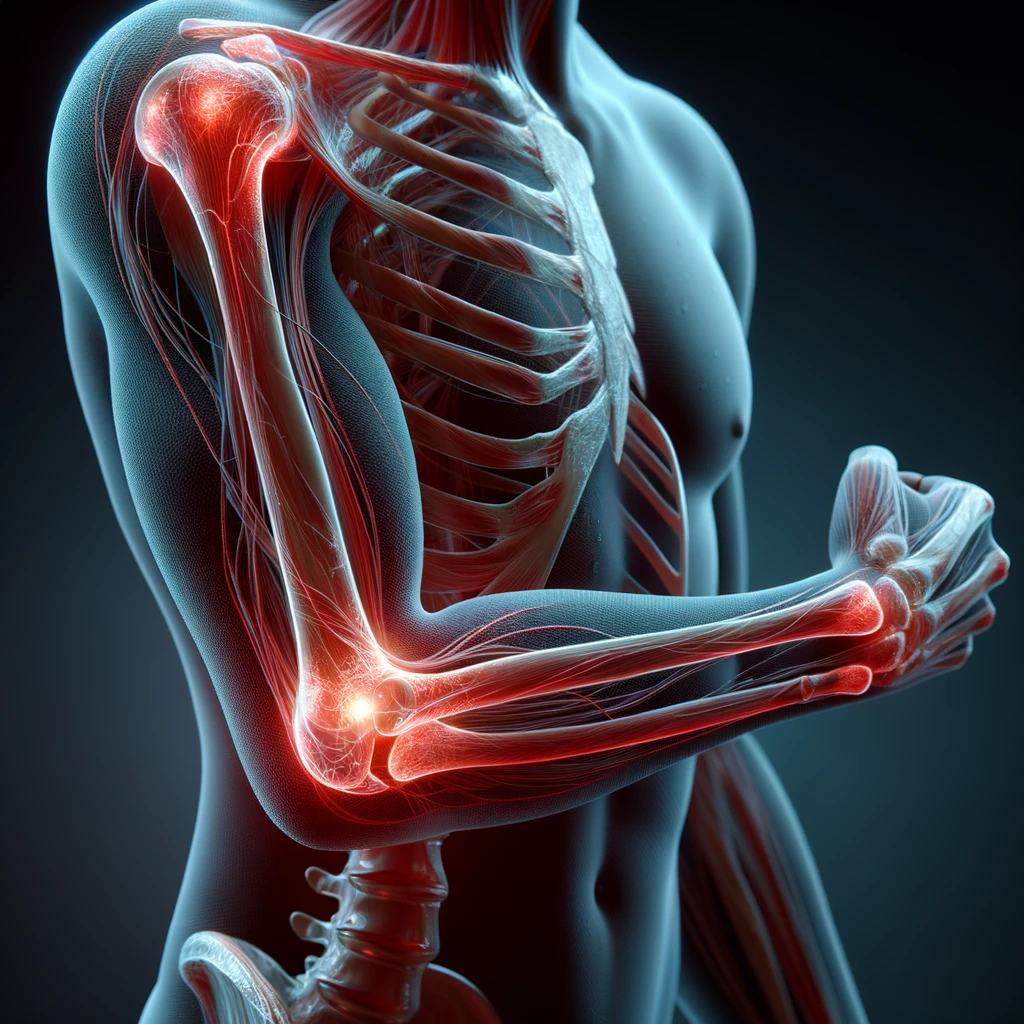Chronic pain is a complex condition that significantly impacts the lives of those affected, reaching beyond mere discomfort to influence overall well-being and quality of life. It is one of the most prevalent health issues reported globally, as highlighted by the Global Burden of Disease Study, and manifests as a persistent feeling of pain that lasts weeks to years, often persisting well beyond the expected period of healing.
Physical therapy, also known as physiotherapy, has emerged as a foundational approach in managing chronic pain. Through a patient-centric strategy, physiotherapists develop tailored rehabilitation plans to increase mobility, strengthen muscles, and alleviate discomfort. The primary goal is to guide patients towards self-management, improving function and empowering individuals to lead a more active lifestyle despite their pain.

Key Takeaways
- Chronic pain is widespread and affects patients long-term, carrying significant personal and societal impact.
- Physiotherapy is a central treatment modality aimed at mitigating chronic pain and improving patient function.
- Effective pain management strategies emphasize individualized care, aiming to enhance the overall quality of life.
Understanding Chronic Pain
In this section, we will explore the intricate nature of chronic pain, differentiating it from acute pain, and understanding its physiological complexities. We will also discuss various chronic pain syndromes and how pain is quantified and assessed.
Physiology of Chronic Pain
Chronic pain is distinct from acute pain, which is a direct response to injury or potential harm. It serves as a warning and typically diminishes as the body heals. Chronic pain, on the other hand, persists for months or years and can continue even after the initial injury or cause has been treated. Pain signals in chronic pain often remain active in the central nervous system (CNS) for prolonged periods, and may involve changes in the body and CNS that amplify and maintain pain.
Pioneered by researchers Melzack and Wall, the gate control theory of pain suggests that there are mechanisms in the spinal cord that can either allow or block pain signals to the brain. With chronic musculoskeletal pain, for instance, these “gates” may malfunction, causing an overreaction to pain signals.
Chronic Pain Syndromes
Chronic pain syndromes encompass a range of conditions characterized by persistent pain that may occur in various parts of the body. Some well-known syndromes include fibromyalgia, complex regional pain syndrome, and chronic fatigue syndrome. Each of these disorders has unique symptoms, but they are all connected by the common thread of chronic pain, which is often difficult to manage and can greatly affect an individual’s quality of life.
Pain Measurement and Assessment
Assessing chronic pain is a crucial step in managing it. We use several methods to measure pain, acknowledging that pain is a subjective experience that varies widely among individuals. Tools such as numerical scales, descriptive pain intensity scales, and visual analog scales are utilized to translate a patient’s pain experience into a quantifiable metric. This assessment aids healthcare providers in devising an effective treatment plan, which may include physiotherapy as a key component for managing chronic pain.
By understanding the physiology behind pain, recognising chronic pain syndromes, and accurately assessing pain levels, we can tailor interventions more effectively and provide relief to those suffering from this often debilitating condition.
Physiotherapy Approaches
In managing chronic pain, we recognize the importance of evidence-based physiotherapy approaches. These methodologies are tailored to alleviate pain and improve function, each with its distinct mechanisms and applications.

Exercise Therapy
We incorporate exercise therapy as a cornerstone of physical rehabilitation. Structured exercise programs enhance strength, flexibility, and endurance, directly impacting pain management. For instance, we may apply low-impact aerobic training that has been supported by research to help individuals with chronic pain, as seen in studies reporting on pain management clinics.
Manual Therapy
Manual therapy is employed by our physiotherapists as a hands-on technique to manipulate and mobilize soft tissues and joints. This approach aids in reducing pain, improving range of motion, and facilitating natural healing. Notably, techniques such as mobilizations or manipulations can be highly effective, especially when combined with other treatment modalities.
Electrotherapy and Biofeedback
We utilize electrotherapy and biofeedback to control pain and increase awareness of muscular function. Techniques under this category include Transcutaneous Electrical Nerve Stimulation (TENS), which delivers small electrical pulses to the affected area to provide pain relief. Additionally, thermal therapies applying heat or cold compresses can aid in reducing pain and inflammation. Biofeedback assists patients in understanding their physiological responses to stress and pain, thus enhancing their ability to manage discomfort.
Complementary Therapies

In our exploration of complementary therapies for chronic pain management, we focus on evidence-backed methods known to enhance the efficacy of physiotherapy. These therapies can be integral to pain management strategies, offering potential relief and improved well-being.
Acupuncture
Acupuncture is a practice rooted in traditional Chinese medicine, involving the insertion of thin needles into strategic points around the body. We note that it’s commonly utilized for a variety of pain types, including musculoskeletal issues. Studies have pointed to its effectiveness in reducing pain intensity and improving daily function.
Massage and Relaxation Techniques
Massage therapy serves as a hands-on approach to pain relief that can alleviate tension in the muscles, enhance blood flow, and promote relaxation. Incorporating relaxation techniques such as meditation and mindfulness may further assist in managing the symptoms of chronic pain by lowering stress levels and improving mental clarity.
Alternative Treatments
We recognize various alternative treatments that show promise in chronic pain scenarios. Among these, tai chi and yoga offer both physical and psychological benefits, potentially aiding in pain relief and mobility for conditions such as osteoarthritis. Their low-impact nature makes them suitable complements to physical therapy routines.
Chronic Pain Management

Managing chronic pain effectively involves both understanding the various options available and knowing when to apply them. Our aim is to bridge the gap between pain and relief by considering all angles—from medications that can alleviate pain to holistic approaches and comprehensive treatment plans.
Pharmacological Treatments
Medications are often the first line of defense in pain management. Our approach includes:
- NSAIDs: For inflammation-related pain, non-steroidal anti-inflammatory drugs (NSAIDs) can be beneficial.
- Opioids: When pain is severe, opioids may be prescribed with caution due to the risk of dependence and adverse events.
- Anticonvulsants: These can be effective for nerve pain management.
- Antidepressants: Certain antidepressants offer relief for some types of chronic pain.
- Corticosteroids: Utilized in some cases to reduce inflammation and alleviate pain.
Proper dosage is key, as is monitoring for adverse events to ensure patient safety.
Non-Pharmacological Strategies
We recognize the importance of non-pharmacological approaches:
- Exercise: Tailored physical activity can strengthen muscles and reduce pain.
- Physical Therapy: Expert guidance can help restore movement and function.
- Nerve Blocks: These procedures can offer temporary relief for certain pain conditions.
- Epidural Steroid Injections: These are used specifically for spinal pain relief.
Balancing these strategies with pharmacological treatments often yields the best outcomes.
Multidisciplinary Pain Management
Our comprehensive pain management involves:
- Collaboration with various specialists.
- Formulating individualized treatment plans.
- Regular evaluation of treatment effectiveness to adjust as necessary.
This multidisciplinary approach ensures a well-rounded treatment plan that addresses the complete spectrum of the pain experience.
Implications for Quality of Life
Chronic pain has multifaceted implications for a patient’s quality of life, profoundly affecting their physical capabilities, mental health, and everyday activities. Our exploration into these areas sheds light on the necessity for comprehensive treatment strategies.

Impact on Physical Function
We find that chronic pain can significantly diminish quality of life by restricting a person’s ability to perform daily tasks and activities. It often leads to functional disability where individuals may struggle with basic movements, experience diminished strength, and have a reduced range of motion. For instance, research shows variable outcomes in physiotherapist-led rehabilitation, which highlights the complex nature of physical impairment due to chronic pain.
Mental Health Considerations
Our investigation underscores that chronic pain doesn’t just affect the body but also has serious implications for mental health. There’s a demonstrated link between chronic pain and increased rates of anxiety, depression, and stress. These mental health challenges can exacerbate pain sensations, creating a cyclical pattern that’s tough to break. Also noteworthy is the interference with sleep, which is both a consequence and a contributor to the intensification of chronic pain symptoms. Addressing these concerns is crucial as they are integral to overall wellbeing and quality of life.
Managing Daily Living
We observe that living with chronic pain requires substantial lifestyle changes. Everyday activities that were once taken for granted may now necessitate careful planning and modified approaches. Effective management strategies often include a combination of medication, physical therapy, and psychological support to help individuals cope with their condition. The goal is to minimize the impact on daily living and to support patients in leading a life as close to normal as possible, despite the presence of chronic pain.
Patient-Centric Care

In our approach to patient-centric care, we emphasize the critical role of education, tailored exercise programs, and comprehensive assessments. These components bridge the gap between medical treatment and improved physical function, ensuring adherence through a partnership between patients and clinicians.
Education and Counseling
We recognize the importance of patient education in the management of chronic pain. Through our clinic, we provide detailed explanations of conditions and treatment plans, ensuring that patients understand the role they play in their own healthcare. Counseling plays a vital part in this, as it allows us to address the psychological impacts of chronic pain, which often requires the collaboration of physiotherapists and occupational therapists.
Exercise Prescription and Adherence
Our exercise prescriptions are tailored to each patient’s specific needs and are designed to enhance physical function and manage pain. We employ strategies to boost adherence, including setting realistic goals and providing ongoing support. Regular follow-ups ensure that exercises remain effective and are adapted as patients progress.
Comprehensive Assessments
We conduct comprehensive assessments that encompass physical, psychological, and social aspects of health. This holistic approach allows us to create targeted interventions that are more likely to result in positive outcomes. Assessments guide our clinical decisions and ensure that we are aligning our treatment plans with the unique needs and preferences of our patients.
Special Populations
In addressing the complexities of chronic pain management, we must pay particular attention to special populations, such as the elderly and children. These groups have unique needs and require tailored approaches to mitigate the impact of chronic pain on their quality of life.

Chronic Pain in the Elderly
The elderly often experience chronic pain due to conditions such as osteoarthritis. With a higher prevalence of pain, it’s crucial that we adopt guidelines for the management of pain specifically in this demographic. The subjective nature of pain requires careful assessment and management strategies that are sensitive to the communication limitations and increased vulnerability of the elderly.
- Acute and chronic musculoskeletal pain is the primary contributor to disability among the elderly.
- It is essential to balance pain management with the minimization of potential side effects from pain medications, which may be exacerbated in older adults.
Pediatric Chronic Pain Management
Children also represent a population that necessitates a distinctive approach to pain management. Unlike adults, children’s ability to communicate their pain may be less developed, requiring healthcare providers to employ both observational skills and validated pain scales tailored to young patients.
- Chronic pain in children can stem from various conditions and greatly impacts their development and daily functioning.
- Effective pain rehabilitation programs focus on improving the children’s quality of life by incorporating physical therapy as well as psychological support.
Our interventions are most effective when they are age-appropriate and consider the developmental stage of the patient. By implementing evidence-based practices, we aim to improve the lives of those who live with chronic pain every day.
Epidemiology of Chronic Pain
Chronic pain affects a significant portion of the population, influencing quality of life and necessitating a comprehensive understanding of its prevalence. Our focus is to investigate the distribution and determinants of chronic pain on a global scale, and within the realm of musculoskeletal disorders and conditions.

Global Perspective
Globally, chronic pain presents a substantial challenge, as highlighted by the Global Burden of Disease Study. Our insights reveal that conditions such as low back pain and neck pain consistently rank among the top contributors to disability worldwide. The prevalence of osteoarthritis, a leading cause of musculoskeletal disorders, similarly adds to the global burden, with major implications for healthcare systems. The British Pain Society underscores that an estimated 43.5% of the UK population experiences some form of chronic pain, with a significant percentage of these cases involving severe and disabling pain.
Musculoskeletal Disorders and Conditions
Musculoskeletal conditions encompass a wide range of ailments that affect the body’s muscles, bones, and joints. Key entities among these are arthritis, fibromyalgia, rheumatoid arthritis, and chronic musculoskeletal pain. Specifically, knee pain and chronic neck pain are prevalent issues that bring countless individuals to seek physiotherapy. Muscle tension also contributes significantly to chronic discomfort and is a common condition we address in our practice. It is imperative for us to understand the epidemiologic trends of these disorders to guide our interventions effectively.
Clinical Perspectives
In the realm of physiotherapy for chronic pain, we are witnessing a significant interplay between evolving practices and the steadfast goal of enhancing patient quality of life. We understand the necessity to address pain management with a multifaceted approach, incorporating various healthcare professionals to meet complex treatment needs.
Role of Healthcare Professionals
Healthcare systems globally are recognizing the pivotal role physiotherapists and occupational therapists play in chronic pain management. Within the clinic setting, our role extends beyond administering treatments; we assess pain quality and intensity to tailor individual care plans. By fostering a collaborative environment, we ensure that the multidisciplinary approach is more than a concept—it’s the crux of effective pain management.
Pain Management in Clinical Settings
In clinical settings, our primary objective is to treat chronic pain with an array of evidence-based interventions. We prioritize setting realistic expectations for our patients, understanding that treatment outcomes can vary. The environment within a hospital or clinic is designed to be conducive to both physical healing and psychological support, as the two are indissolubly linked in the context of chronic pain.
Evolving Treatments and Practices
We actively stay abreast of the evolving treatments and practices in physiotherapy. Technological advances and innovative research continually inform our treatment protocols. Our practices evolve not only in response to emerging evidence but also to reflect shifts in healthcare policy and patient expectations. What remains constant is our commitment to improving the quality of life for those we treat.
Frequently Asked Questions
In this section, we address common inquiries regarding the role of physiotherapy in chronic pain management, detailing specific treatments and career paths in this specialist field.
How can physical therapy assist in the management of chronic pain?
Physical therapy helps manage chronic pain by improving mobility and function through techniques such as structured exercise, manual therapy, and patient education. This therapeutic approach focuses on the individual’s specific pain patterns and aims to reduce pain and enhance quality of life.
What techniques do specialist pain physiotherapists use for pain relief?
Specialist pain physiotherapists deploy various techniques including manual therapy, designed exercise programs, and electrotherapy. They may also implement cognitive-behavioral strategies to help patients manage their pain more effectively.
When is pain medication recommended in conjunction with physical therapy?
Pain medication may be recommended during physical therapy to manage acute pain spikes or to facilitate participation in therapy sessions. It is crucial to work closely with healthcare professionals to balance medication with therapeutic interventions for the most favorable outcomes.
What are the ‘5 A’s’ of chronic pain management within physiotherapy?
The ‘5 A’s’ of chronic pain management in physiotherapy include: Activity moderation, Analgesia, Anxiety reduction, Alternate therapies, and Active lifestyle. These principles guide physiotherapists to create a comprehensive pain management plan for their patients.
How does one cope with episodes of unbearable chronic pain?
Coping with episodes of unbearable chronic pain involves the use of relaxation techniques, heat or cold therapy, pacing daily activities, and emotional support. Physiotherapists provide tools and education to help patients manage their pain episodes.
What are the career opportunities in pain management physiotherapy?
Career opportunities in pain management physiotherapy include roles in hospitals, private clinics, research, and academia. Expertise in chronic pain management is increasingly demanded as awareness grows regarding chronic pain as a multifaceted health issue requiring specialized care.











